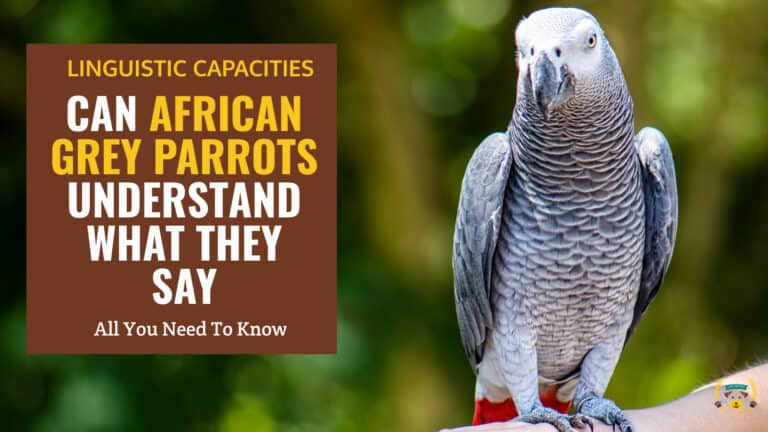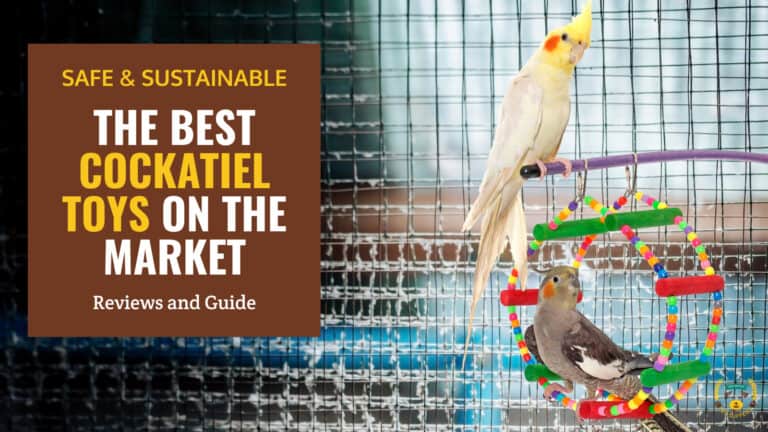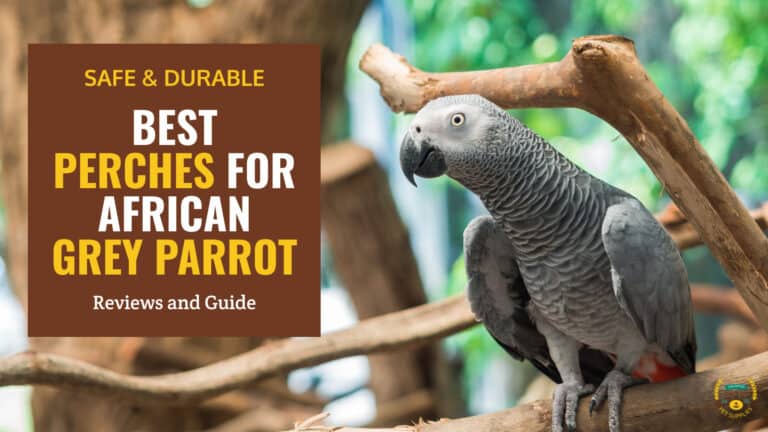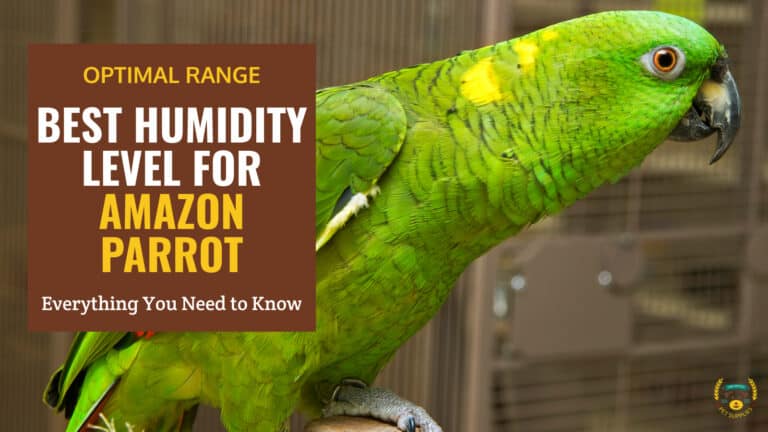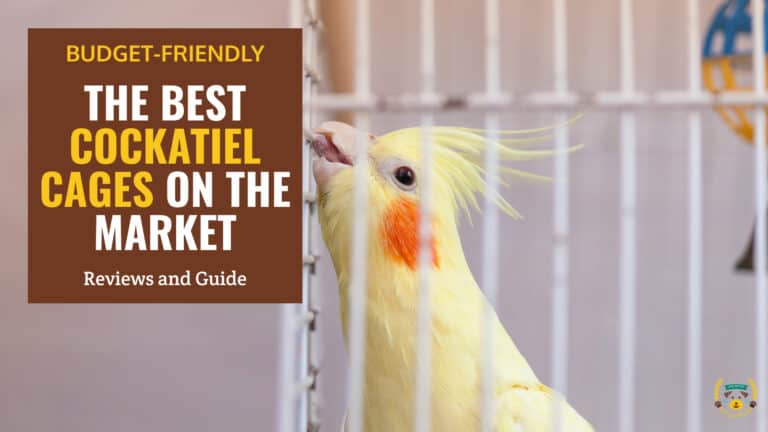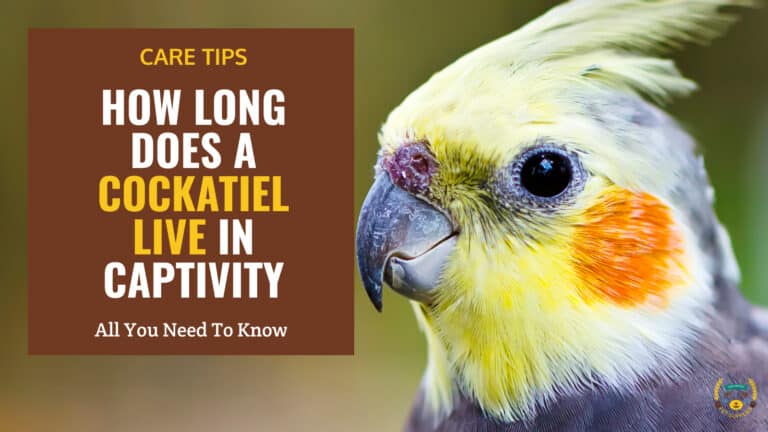How Many Words Can an African Grey Parrot Learn?
Last updated: February 3, 2024
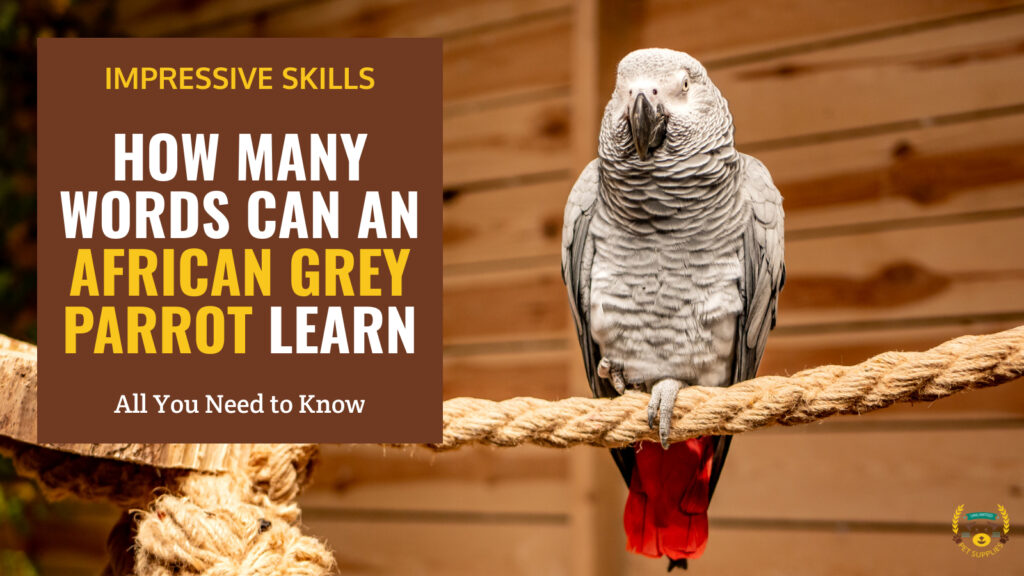
Summary
- African Grey parrots can mimic speech and learn large vocabularies unrivaled by other birds.
- With lifelong training, they may reach 1000 words but typical pets learn 100-500.
- Alex the parrot and Einstein showed exceptional scientifically-documented vocabularies over 1000.
- Key factors are early training, socialization, mimicry talent and patient repetition.
- Claims over 1000 are unverified. Greys show impressive but limited speech compared to humans.
The African Grey parrot is renowned as one of the most talented talking birds in the world. Native to equatorial Africa, these medium-sized parrots are known for their exceptional ability to mimic human speech and learn vocabulary. Their impressive cognitive skills, long lifespan in captivity, and stunning grey plumage have made them a popular pet species for decades.
While many parrots can be taught to repeat words and phrases, African Greys stand out for their capacity to acquire large vocabularies. With intense daily human interaction over many years, some researchers believe African Greys have the potential to learn up to 1,000 words or more.
This article will explore the key question: Just how many words can an African Grey parrot realistically learn over its lifetime? We'll examine documented cases of exceptional talking Greys, vocabulary ranges for typical pet Greys, and the maximum word capacity given ideal training conditions. While African Greys are renowned as "talking parrots," the extent of their verbal skills may surprise some readers.
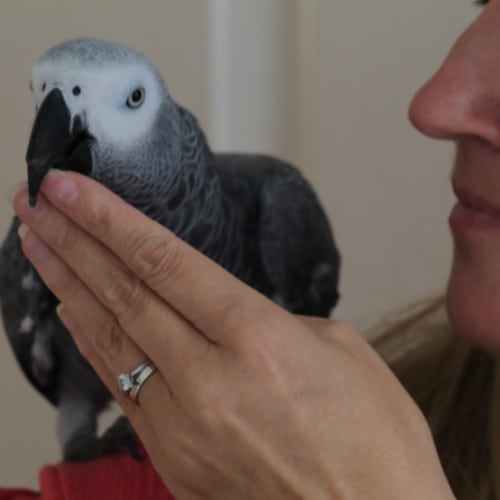
Overview of African Grey Parrots
African Grey parrots are endemic to the tropical forests of Central and West Africa. Two subspecies exist - the Congo African Grey and the Timneh African Grey. Congo Greys are larger with bright red tail feathers, while Timnehs are smaller with darker charcoal plumage and maroon tails. Both subspecies exhibit the charismatic grey feathers and bright red tails that make African Greys so recognizable.
In the wild, African Greys live in large flocks and spend most of their time in the forest canopy. They have an average lifespan of 50 years. In captivity, with proper care and feeding, African Greys can live up to 80 years old. Their long lifespans allow plenty of time for owners to bond with and train their grey to talk.
Typical Word Counts for Pet African Greys
Most pet African Grey parrots will never reach the exceptional vocabularies of rare, scientifically studied specimens like Alex or Einstein (more on them later). However, with consistent training, Greys kept as pets can still learn impressive numbers of words that allow for basic communication with their owners.
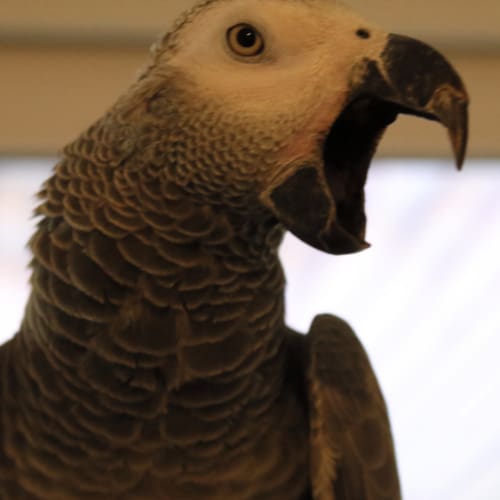
100-150 Words
Many pet African Greys have the capacity to learn a vocabulary of 100-150 words through daily repetition and training. This gives them the ability to verbally label common objects, request favorite foods, mimic household noises, and say familiar phrases.
Some of the first words Greys tend to learn are their own name, family member names, greetings like "hello" and "goodbye", and names of favorite foods or toys. With a vocabulary of 100-150 words, owners can have simple back-and-forth vocal exchanges with their Greys.
300-400 Words
With intensive daily training sessions over many years, some pet Greys can master a vocabulary of 300 words or more. This enables them to combine words into simple phrases and sentences.
Example phrases a Grey might learn with a 300+ word vocabulary:
- "Want peanut"
- "Go for walk"
- "Good morning Alex"
- "What are you doing?"
A 400-word vocabulary allows a Grey to express more complex ideas through short sentence combinations. Their speech remains limited, but impressive for a non-human animal.
500-1000 Words
Only a select number of pet Greys, given ideal training conditions for years, reach vocabularies between 500-1000 words. This enables advanced cognitive abilities like describing objects and events in their environment, answering simple questions, and engaging in basic dialogue with owners.
However, vocabularies exceeding 500 words in household pets are exceptionally rare. Most Greys realistically learn no more than 300-400 words through regular at-home training. Still, the language capacities of African Greys continue to astonish researchers and owners alike. Their ability to mimic and comprehend human speech patterns is unmatched in the animal world.
Exceptional Vocabularies
While typical pet African Greys may only learn up to a few hundred words, a select few Greys with intensive scientific training have demonstrated exceptional vocabularies of over 1000 words. These unique cases give insight into the upper limits of language comprehension possible for Grey parrots.
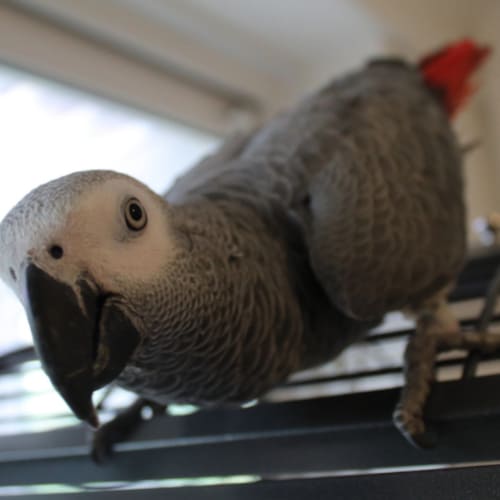
Alex the Parrot (May 18, 1976 – September 6, 2007)
The most famous talking African Grey was Alex, who worked with animal psychologist Dr. Irene Pepperberg for over 30 years. Alex ultimately learned over 100 English words and could identify and vocally label more than 50 different objects.
Key elements of Alex's training included:
- Daily training sessions with Dr. Pepperberg from a young age.
- A model/rival technique where two humans modeled conversations and Alex had to compete to participate.
- Contextual learning focused on concepts like shape, color, and number instead of rote memorization.
Alex could combine words to make basic requests like "want banana" and answer simple questions about object properties. The special thing about Alex was that he demonstrated sophisticated comprehension of concepts, rather than just mimicking words.
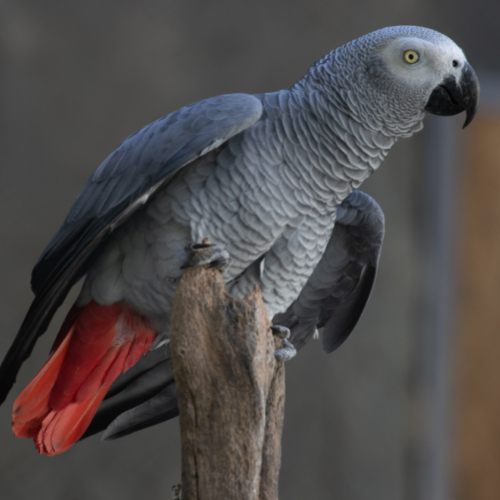
Einstein the Parrot
Einstein, an African Grey living in Arizona, currently holds the Guinness World Record for the largest vocabulary of any bird species at over 1000 words. Owners report he can combine words spontaneously to answer complex questions and label objects in photographs he's never seen before.
Some of Einstein's abilities include:
- Using sentences like "I wanna go back inside" without explicit training.
- Answering unconventional questions like "What color is the fire truck?"
- Recognizing family members by name and appropriate greetings like "Hi mom, where were you?"
While not formally studied, Einstein's vocabulary knowledge exceeds that of documented Greys like Alex. This shows the potential of Greys to surpass 1000 words with lifetime training.
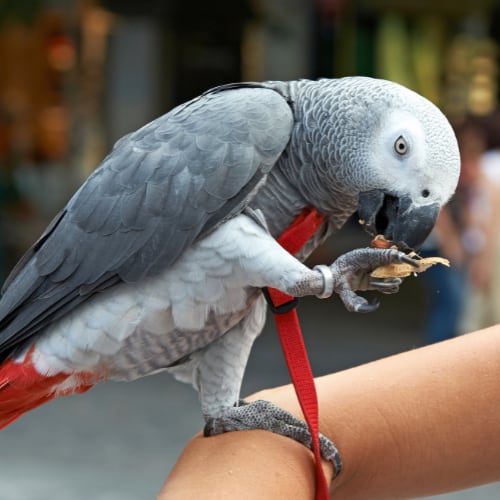
N'kisi the Parrot
N'kisi, an African Grey owned by artist Aimee Morgana, was said to use over 950 words to create simple sentences like "N'kisi love Aimee." While these claims are fascinating, they remain scientifically unverified, unlike the studies done on Alex. Even so, N'kisi represents another example of the language capacities of Greys under ideal long-term learning conditions.
N'kisi demonstrated an impressive aptitude for visual recognition and communication. When shown photographic images, N'kisi could accurately name objects within his vocabulary and even invent descriptive terms for unfamiliar items through imaginative word combinations.
Upon meeting primatologist Jane Goodall in person after seeing her photo, N'kisi allegedly asked "Got a chimp?", showcasing his ability to cross-reference images with real individuals. Accounts indicate N'kisi possessed advanced reasoning and likely a sense of humor as well.
Maximum Realistic Word Count
Based on the documented vocabularies of exceptional African Greys like Alex and Einstein, as well as the typical word capacity for household Greys, what's the maximum realistic word count for this species?
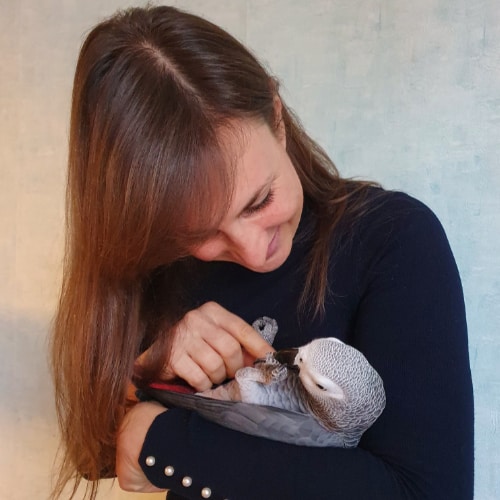
1000 Words
Given the current evidence, most experts agree that a vocabulary of around 1000 words represents the realistic upper limit for African Greys under ideal training conditions.
Key points:
- Only a handful of African Greys have been reported to exceed 1000 words after a lifetime of daily training.
- The average pet Grey likely masters between 100 and 500 words with regular training from owners.
- Intensive, scientific training like Alex received can produce vocabularies of 100-200 words and basic sentence construction.
- Claims significantly above 1000 words remain scientifically unverified.
Therefore, while a 1000-word vocabulary is achievable for Greys, it requires constant, dedicated training over many years to reach this level. For the majority of household Greys, vocabularies fall well short of this maximum capacity.
However, even a more modest vocabulary of a few hundred words allows African Greys to display impressive language use compared to other non-human species. Their advanced vocal imitation and comprehension skills are unmatched in the animal world.
How can I maximize my African Grey's vocabulary?
To enhance the vocabulary of your African Grey parrot, consistent and thoughtful efforts are essential. Communication is key, and these strategies can help you build a rich repertoire of words and phrases in your parrot's language.
Frequent Verbal Interaction: Regularly engage in conversations with your parrot, using a wide range of words to describe daily activities, objects, foods, emotions, and more. Speaking to them frequently not only helps them learn new words but also reinforces their existing vocabulary.
Associative Learning: Name things as you use or eat them, repeating the words often. This form of associative learning helps your parrot connect words with specific objects or actions, making their vocabulary more practical and contextual.
Diverse Auditory Stimulation: Reading books, media, or any form of content aloud to your parrot can introduce them to a variety of voices and sounds. Using diverse adult language exposes them to different linguistic patterns and tones, enriching their language skills.
Social Interaction and Mimicry: Create an environment of regular social interactions that are full of conversation and mimicry opportunities. African Grey parrots thrive on socialization, and these interactions provide them with more linguistic input to learn from.
Active Listening and Response: Pay attention to your parrot's speech and respond to it. Encourage real verbal exchange by acknowledging and engaging with their attempts at communication. This two-way interaction helps them feel more involved and motivated to learn.
Gradual Introduction of New Words: Introduce new words to your parrot's vocabulary gradually over time. Reinforce the words they have already learned and build upon their existing knowledge. This approach prevents overwhelming them and allows for steady vocabulary expansion.
Positive Reinforcement: When your parrot correctly repeats new vocalizations, offer positive reinforcement. Praise and reward can motivate them to continue learning and using their expanded vocabulary.
Daily Verbal Engagement: Engage your parrot in quality verbal interactions on a daily basis. Their innate cognitive abilities are stimulated through consistent engagement, allowing them to naturally absorb new words and expressions.
Well-balanced diet: Maximizing an African Grey's vocabulary goes beyond mere training; it also hinges on their nutritional well-being. The connection between their mental activities and nutrition is equally vital. A well-balanced diet, rich in essential vitamins and nutrients, provides the foundation for their cognitive functions. Nutritional deficiencies can hinder their language development, making it essential to offer the right blend of vitamins and supplements.
Patience and Consistency: Finally, remember that building a comprehensive vocabulary for your African Grey takes time and repetition. Be patient and consistent in your efforts, as vocabulary development is a gradual process. Consistent training and nurturing interactions will yield the best results over time.
Frequently Asked Questions
How do African Greys learn words?
African Grey parrots learn words through social, repetitive interactions that build meaning, not regimented training. Their vocal mimicry ability lets them memorize words, but their social nature allows vocabulary to expand through engaging, rewarding conversation. Like children, Greys learn language when new words refer to their needs and environment.
Patient, nurturing exchanges make spoken language emotionally relevant to African Greys. With time and interactive exposure, they comprehend associations that enable continual acquisition and purposeful use of vocabulary. For Greys, language is a social tool acquired by bonding with human flock members.
What factors affect an African Grey's ability to learn words?
Several key factors influence an African Grey's ability to learn words:
* Age plays a role, as Greys are best equipped to pick up language when young and still developing speech skills.
* Their innate capacity for vocal mimicry also varies, with some predisposed to larger vocabularies.
* The amount of social, engaging interaction greatly impacts language acquisition. Greys that are frequently spoken to, included in household activities, and exposed to conversation learn faster and actively use more words.
* Patience is vital too, as vocabulary accumulates steadily over years, not weeks. Providing a nurturing, stimulating environment builds communicative skills, while isolation and neglect lead to limited language.
Can African Greys learn words on their own without training?
African greys have incredible natural intelligence and speaking abilities. While deliberate training helps expand their vocabulary, they are fully capable of picking up new words on their own simply by listening.
Their innate social curiosity drives them to listen and learn speech like eager human pupils. With their keen minds and vocal talents, African greys readily acquire new vocalizations on their own through exposure alone.
Do male and female African Greys learn language abilities differently?
There is little evidence of major differences in language learning between male and female African greys. Both genders exhibit the same remarkable capacity for speech and mimicry from a young age.
However, males tend to be more vocal and have larger vocabularies on average, while females are often quieter with more selective speech.
However, this likely reflects personality differences rather than innate language differences between the sexes. Given the same socialization and training, male and female African greys demonstrate equivalent aptitude for understanding words, expanding vocabulary and using language contextually.
Final Thoughts
In summary, while African Grey parrots display exceptional language capacities compared to other animals, their maximum realistic vocabularies remain limited relative to humans. Through decades of consistent daily training, however, a select few Greys have demonstrated the ability to acquire vocabularies of over 1000 words and engage in basic dialogues.
In the end, African Greys truly stand out for their vocal imitation abilities and comprehension of human language compared to other pets. But despite captivating claims of "talking parrots," expectations for their realistic word capacity should be kept in check. With diligent, daily training, vocabulary in the low hundreds is impressive for any Grey. Reaching vocabularies near 1000 words remains the astonishing achievement of only a special few.
Thanks for reading!

